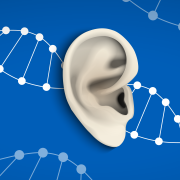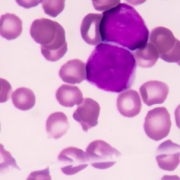Inversions explained
So, what are they, and how do they impact on health?
Inversions are a type of variant that can occur in our genomes. They are part of a group of changes known as ‘structural rearrangements’ that include deletions (where large sections of DNA are missing), repeats (or copy number variants) and translocations within the genome.
Inversions happen when a piece of DNA in a chromosome gets reversed – meaning it is in the right place in the right chromosome, but the wrong way round. They can occur anywhere in the genome, but they may be more common in some regions than others.
Impact on health
Inversions can range in their effects on our health and, as we’ll learn later, are extremely common and part of business as usual for our bodies.
Some inversions have no deleterious effects at all. This is more common when the inversion is ‘balanced’, meaning there is no loss or gain of genetic material.
Other inversions can more easily cause disease, especially where one or both breaks in the DNA fall within the reading frame of a gene. If this occurs, the two parts of the gene are separated and the gene can no longer be read, potentially causing a loss of function.
Some inversions that may have no effects on day-to-day cell function can still impact other processes, like reproduction. In some cases, they can lead to fertility issues, or cause physical or learning difficulties in the child as they grow up.
Prevalence in the genome
New research published in Cell indicates that inversions are far more common in the human genome than was previously understood. Before long-read sequencing technologies were widely used, it was difficult to assess inversions and other large structural variants because next-generation sequencing works by cutting the DNA into short fragments, making it hard to tell if a piece was the wrong way round during reassembly.
“In humans, at least 0.6% of the genome repeatedly changes direction, making inversion one of the fastest mutational processes in humans,” said author Jan Korbel, from the European Molecular Biology Laboratory in Germany. “At these sites, the genome is not stable – the direction of the DNA code continues to switch back and forth.”
Continuing research
The study also found evidence that inversions were implicated in structural rearrangements associated with autism, developmental delay and epilepsy in children. The researchers suggest that variants in the areas of the genome adjacent to the places where these inversions occur could make people more or less likely to be affected by disease-causing inversions.
“This could have a practical application in the clinic, where it could be used to identify families at risk for developing these disorders,” said author Evan Eichler from the University of Washington.
–





 BBC/Minnow Films
BBC/Minnow Films 


